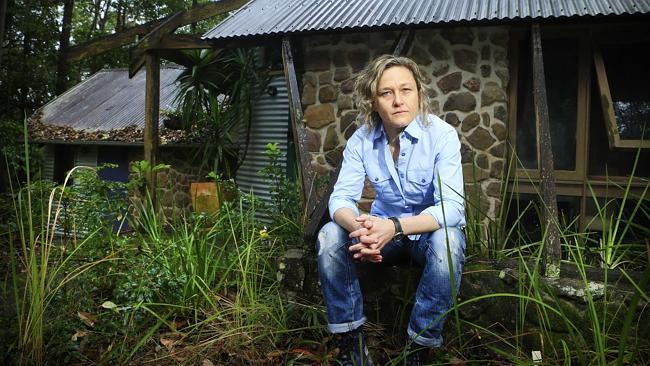Inga Simpson’s Where the Trees Were a subtle journey through time
Where the Trees Were by Inga Simpson touches the heavy issues at its heart with light fingers.

It is one endless summer in central western NSW, sometime in the 1980s. A group of primary school-age children is liloing down the muddy river as it meanders through their family farms. Stopping for lunch, they happen across a stand of yellow box gums they haven’t noticed before. One of these trees bears an extensive carving. If you are a Wiradjuri person, this carving represents a map for a departed soul to navigate the afterlife. It is the posthumous respect accorded a significant person, probably a warrior; it also marks their gravesite.
If you are an enlightened European Australian, it is an arborglyph, an artwork destined for the arid protection of some museum’s storage unit. But if you believe your land and living are threatened by such trees, that in the coming age of Mabo they might indicate prior ownership or stewardship of a space over countless generations, they are a threat to be destroyed.
Inga Simpson’s third novel, Where the Trees Were, emerges from the drama occasioned by the children’s discovery and their decision to keep the site a secret. From that comes a larger story about the ongoing friction between white and black worlds in Australia. Its signal virtue is the delicacy and tact with which it approaches such issues. No febrile rhetoric, no flattening out of character to fit some template of virtue or vice; just a group of kids growing up and away from their childhoods, their friendships, their loving if flawed parents, into lives that are every bit as messy and morally conflicted as those of the generation that bore and raised them.
It is the kind of book in which we learn that one of the young friends is Aboriginal only pages in, through a single oblique reference. And it is the kind of work where the most destructive act is undertaken by a person we have been led to honour, love and respect. It touches the heavy issues at its heart with light fingers, and is all the more effective for it.
Much of this, it should be said, unfolds in distant retrospect, though the childhood portions of the novel are granted the immediacy of first-person narration. The other half unfolds in the recent present (and third person), during the months leading up to the invasion of Iraq.
Jayne, on whose family’s land the tree was discovered years before, has become an arts conservator based in Canberra. Clean living, practical, a cyclist with a taste for fine wine, she has a loving if arms-length relationship with a female bureaucrat involved with foreign affairs (Jayne calls herself ‘‘an intelligence widow’’). She is good at her job, a true detective when it comes to investigating objects from the past; and yet the reader knows from the outset that she has committed a crime. The question the novel asks is not whether she is guilty, because she is: it is whether the author can wield broader context in such a way as to balance Jayne’s acts against the nature of the world through which she moves.
And that world we now know is either incompetent or corrupt. Managerialism has begun its slow, inexorable strangling of our cultural institutions and places of higher learning. Lance Armstrong is winning the Tour de France. Western governments are twisting dubious intel regarding the Middle East into shapes that suit their purposes. In an environment such as this, the novel subversively suggests, the Forsterian admonition that, given the choice, we should betray our country rather than our friend takes on a newfound clarity.
Simpson is a graceful, limpid writer; her sentences clean up after themselves, neatly laying out their mimetic wares. Any flashiness the novel displays lies in the complex interplay of time-schemes between present and past. That she is a particularly fine writer of place is already clear from a pair of well-received novels. And here, too, she produces some memorable images: most wonderfully, the description of a rush of riverine life down her muddy old river in the wake of a recent rains:
Then the fish started coming up. First just their noses broke the water, as if sniffing. Then the water boiled and surged and turned an even more awful brown. Hundreds of them breached at once: catfish, gurgeon, perch, fish I didn’t recognize. All sizes and shapes, from fingerlings to a great old Murray Cod, all gasping for air. I could hear them sucking.
This watchful, unfussy approach moves outwards, through the ethical thickets of the novel. Issues of gender, sexuality and country mores are dramatised but not amplified beyond their organic emergence.
Even the aborglyphs at the heart of the narrative are registered more as an absence than as a presence: a decision that is decorous, just, and perfectly fretted to the novel’s broader concerns.
Geordie Williamson is editor of Best Australian Essays 2016.
Where the Trees Were
By Inga Simpson
Hachette, 296pp, $29.99




To join the conversation, please log in. Don't have an account? Register
Join the conversation, you are commenting as Logout